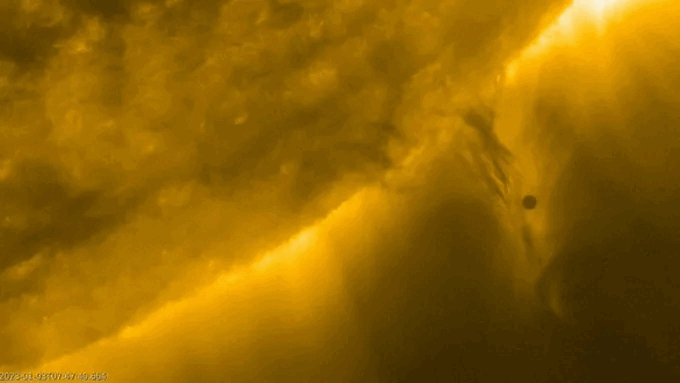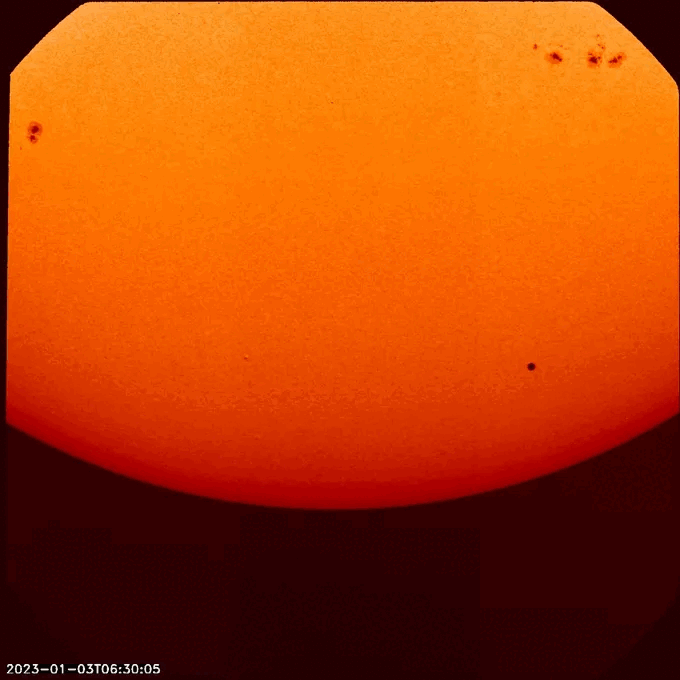Rare moment Mercury passes the Sun captured by spacecraft
The Solar Orbiter spacecraft observed Mercury as it crossed the Sun, a rare moment.

The moving black dot in this video is Mercury transiting the Sun on January 3, 2023, as captured by the spacecraft. (Photo: ESA, NASA)
To capture this moment, scientists had to combine three high-tech instruments of the Solar Orbiter including the Polarimeter and Seismic Imager (PHI), the Extreme Ultraviolet Imager (EUI) and the Spectrometer (SPICE).
The EUI instrument was tasked with capturing a video of Mercury as it moved across the Sun, with the smallest planet in the Solar System clearly visible in the video.
In the image provided by PHI, Mercury appears as a black disk to the lower right of the planet, topped by sunspots.
By looking for small dark motions in the Sun's light, scientists can detect exoplanets and use instruments on spacecraft to estimate the planet's orbital period and size.

Mercury is a small black dot moving rapidly toward the bottom of the Sun's disk. (Image: NASA, ESA).
This is called the transit method of exoplanet detection , and this technique is particularly useful and is used frequently by astronomers.
In June 2023, the European Space Agency (ESA) will get a better look at Mercury when it flies past the Sun again.
The Solar Orbiter spacecraft is equipped with a high-resolution telescope to capture images closest to the Sun.
Solar Orbiter's first close approach to the Sun will take place in March 2022, when it will travel about 42 million kilometers from the central planet, about a quarter of the distance from the Sun to Earth and within the orbit of Mercury.
- Mercury passes through the Sun - a rare astronomical phenomenon is about to take place
- Astonishing image: Mercury passes between the Earth and the Sun
- Mercury is about to glide through the Sun disk
- Israeli photographer captures rare moment of starling birds
- The surface of Mercury is revealed by the image of the spacecraft
- Explore Mercury from Messenger spacecraft
- NASA spacecraft captured the moment the Korean ship flew in the opposite direction
- Revealing exciting new missions about Mercury discovery
- Things you may not know about Mercury
- Overview of Mercury
- Landscape triangle in the night
- Uncover the mysteries of Mercury
 Van Allen's belt and evidence that the Apollo 11 mission to the Moon was myth
Van Allen's belt and evidence that the Apollo 11 mission to the Moon was myth The levels of civilization in the universe (Kardashev scale)
The levels of civilization in the universe (Kardashev scale) Today Mars, the sun and the Earth are aligned
Today Mars, the sun and the Earth are aligned The Amazon owner announced a secret plan to build a space base for thousands of people
The Amazon owner announced a secret plan to build a space base for thousands of people